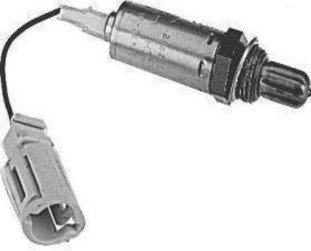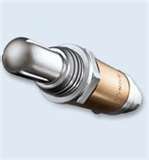
O2 sensor codes are often the most troublesome and misdiagnosed check engine light problems. It is my hope that this short oxygen sensor article will open your mind on the subject.
There are other possibilities besides bad sensors that will set these kinds of trouble codes. Major and minor problems with the engine or vehicle could be at the root cause of the malfunction.
Replacement of good oxygen sensors is one of the common mistakes that both seasoned auto repair mechanics and do it yourself driveway mechanics will make when tackling rich or lean diagnostic codes.
I am not saying that these O2 sensor codes never require the replacement of the sensor itself.
In fact on all vehicles with very high mileage and original parts the sensor could very well be the problem. Some American car makers recommend that the O2 be replaced at 125,000 miles.
Foreign car builders also recommend replacement at varying mileage. Note: If your looking for cheap O2 sensors I have some popular ones listed below! In my opinion beware of universal sensors. I find them unreliable on cars newer then 1990.
Example of a Cheap O2 Code Repair
I was working on a 2004 Ford F150 with a 5.4 L V-8 engine. The driver’s complaint was the check engine light was on. I connected my scan tool and pulled a code P0133.
This code stands for oxygen sensor bank one catalyst response slow. I went into the data stream and confirmed that the oxygen sensor had sluggish operation. The voltage on the scanner moved slow and would get stuck at times or stay fixed.
When I pulled the oxygen sensor it was partially melted. If I had just replaced the sensor and shipped the vehicle down the road it would have come back with the same problem in a few days.
In fact, the fault code and melted sensor meant that the problem was a lean condition that needed to be resolved. A lean mixture can cause very high combustion chamber temperatures and can also melt spark plugs. If you find a melted o2 check the spark plugs also.
To find the cause of the lean condition I went back into the scanners data stream and observed the fuel injector on/off time called “Fuel Trim” and noticed an abnormal injector on time.
The vehicle’s computer was trying to compensate for the lean condition by increasing the amount of fuel delivered. It does this by extending the length of time the injector was open.
Unfortunately for the ruined oxygen sensor the vacuum leak was so severe that the power train control module could not compensate. As mentioned above vacuum leaks can cause an extremely high combustion chamber temperature and post-combustion chamber temperatures as well.
In fact if this problem was not addressed, damage to the catalytic converter was sure to be the next thing to happen. And we all know how expensive catalytic converters are today due to the rising costs of rare metals such as platinum.
Solution for this O2 Code Problem

The vacuum leak in this circumstance was easy to find. Upon a visual inspection of the vacuum line hoses and rubber connectors I found the problem quickly.
On this vehicle the vacuum powered brake booster connects to the intake manifold through a 90° rubber elbow. The rubber had softened and swelled causing a major vacuum leak.
This air sneaking in the back door raised combustion chamber temperatures. Ultimately failure of a $1.00 rubber elbow led to the destruction of my $75.00 bank 1 sensor. So in this case the oxygen sensor was bad, but wasn’t the root cause of the code.
The vehicle I am discussing was a County owned and operated vehicle. If the driver brought the vehicle in when the check engine light first came on an oxygen sensor would have been saved.
I also asked the driver if he had been experiencing poor fuel economy. The answer was yes, in fact he estimated a 50% reduction in miles per gallon. But since the County was filling the fuel tank, the driver put off the repair.
Sometimes car owners do not realize that by putting off a repair could actually cost a lot more money in the long run. To end the story about six weeks later we received a recall from Ford on this truck in reference to this very problem.
This failure was not an isolated incident, and Ford decided to recall and replace this 90 degree bent rubber elbow that supplies vacuum to the brake booster. The Ford recall number is 08-S-05.
Another thing I would like people to understand is the O2 sensor code does not mean it’s time to replace the sensor. It means that it’s time for some diagnosis and repair.
If the diagnosis leads to a replacement of an oxygen sensor that is just fine. But after you replace the oxygen sensor take a moment and verify that the repair is complete.
You can monitor the data stream or perform an O2 sensor test with the very affordable Actron CP 9580 scan tool. For a full review of this scanner visit my auto scanner reviews page.
If you have a tablet or android phone you can also use these devices in conjunction with an app called Torque pro. I have an article and a video on my personal blog where I ran an o2 test with my nexus seven android tablet and show off how the torque app works. Give this o2 sensors repair page a bookmark or share with friends.
For more information about the service engine soon or engine light problems and a full list of OBD2 codes. Visit my page about check engine lights. When diagnosing check engine light problems you may have to break out the wire diagram for the circuit. I put together a 5 minute screen capture video of my technique for using these wiring diagrams to fix cars. When in doubt about why your automobile set an oxygen sensor code the quickest way to find the answer is with a diagnostic chart for the set code. See how you can get one right now using online car repair manuals.

